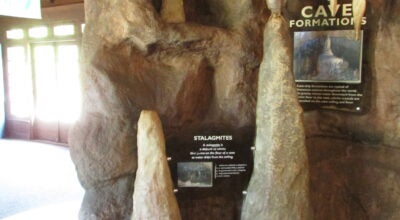The Georgia woods that could have been
Published 4:12 pm Tuesday, November 24, 2020
|
Getting your Trinity Audio player ready...
|
BY ETHAN REDDISH
One of the things I love about Georgia is the wildlife. When hunting, even if I don’t manage to kill anything, I still enjoy seeing the animals in their natural habitat. Deer, turkeys, otters, alligators, rattlesnakes and squirrels are all familiar sites to anyone who spends even a little bit of time in the outdoors. But our state’s ecology used to look wildly different, and if not for the foolishness of man, might still look very different. There were many species of creatures big and small that used to call Georgia home, and that could still feasibly live here, had our ancestors practiced better conservation.
The most recognizable of these extinct species was the Eastern elk. With a range stretching north to Canada and as far south as the middle of Georgia, bulls could weigh up to 1,000 pounds and had racks six feet in length. The elk went extinct in Georgia in 1770, just six years before the signing of the Declaration of Independence. The last member of the species was shot in Pennsylvania in 1877. It’s hard to imagine seeing any species of deer larger than white-tail in our state today, but if our forefathers had been more thoughtful in their logging and hunting practices, the DNR could be selling permits for elk every year. Instead of simply having to worry about hitting deer at night, imagine having to watch for their 1,000 pound cousins as well!
Another species that called our state home, and perhaps the most famous recently extinct animal, was the passenger pigeon. Kin to the mourning dove, the birds bred around the Great Lakes, though their range spread into the Midwest and completely covered Georgia, stopping just above Florida. When migrating, the flocks were so large they were said to black out the sky. Hunters didn’t need to aim at any one bird, firing randomly among the flock would typically bring down several birds; this lead to massive over-hunting. The last pigeon, a hen named “Martha,” died in the Cincinnati Zoo on September 1, 1914. Had people had a more conservationist mindset, these birds could easily still be around today. Imagine going to a bird shoot and being able to reach your limit within minutes!
And last, perhaps the oldest species that used to roam the swamps and woodlands of Georgia, the American mastodon. Mastodons are not the same as mammoths; nowhere near as hairy as their woolly cousins, mastodons were just as at home in temperate and warm climates as the freezing north, with American mastodon herds living as far north as Alaska and as far south as Honduras. They were also smaller, smaller than even modern African elephants, with an average height of seven feet. Despite their size and adaptability, like the other species on this list, it was humans that drove them to extinction, with the true first settlers of America, the Paleo-Indians, hunting them to extinction a little over 10,000 years ago. Unlike the Eastern elk or passenger pigeon, I find it unlikely we could’ve managed to see mastodons in our lifetime. Even if the Paleo-Indians had been conservatory, the arrival of European settlers would have wiped them out, just like they wiped out the elk and pigeons, and just like they nearly wiped out the bison in the West. Imagine the awe the settlers would have upon seeing an ancient species of elephant, a holdover from the Ice Age, still thriving. Then imagine the horror they’d experience upon seeing a herd of them devour a field of crops in a single day. They wouldn’t have tolerated that.
So what’s the point of this, listing species that are dead and gone? It’s a cautionary tale. Every species that I described owed their downfall in no small part to humans. They took them for granted, not thinking of the future or properly managing herds. We have certainly improved in this regard, though some who’ve been ticketed by the DNR may tell you we’ve gone too far in terms of conservation! But just because we have fancy law enforcement bodies doesn’t mean we can grow complacent. If we fall into the trap of believing the animals we still have will always be here, we’re falling into the same trap as our ancestors. And that’s something we should all strive to avoid.





